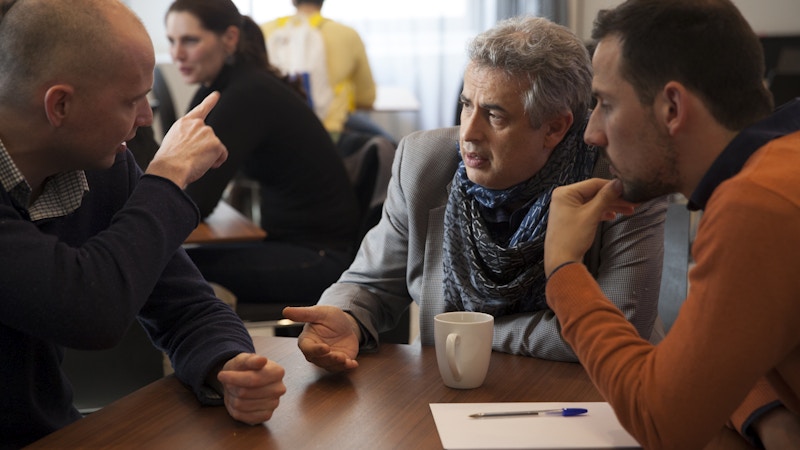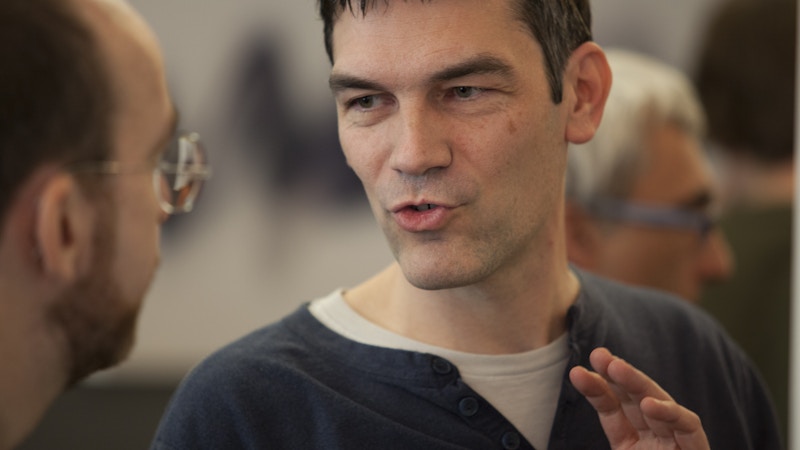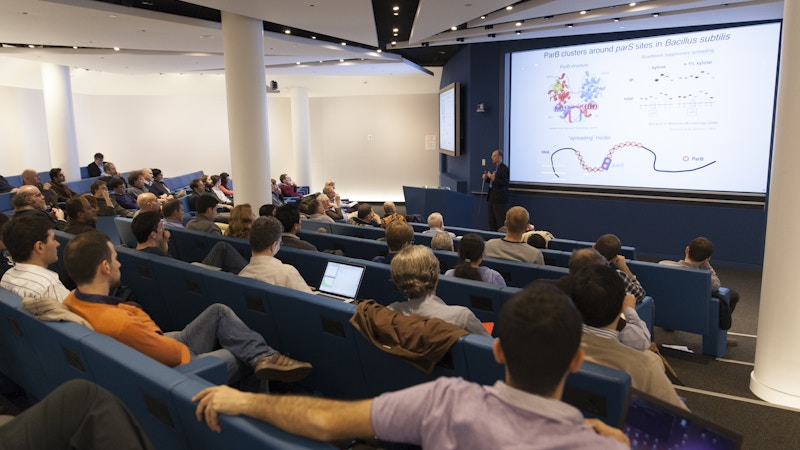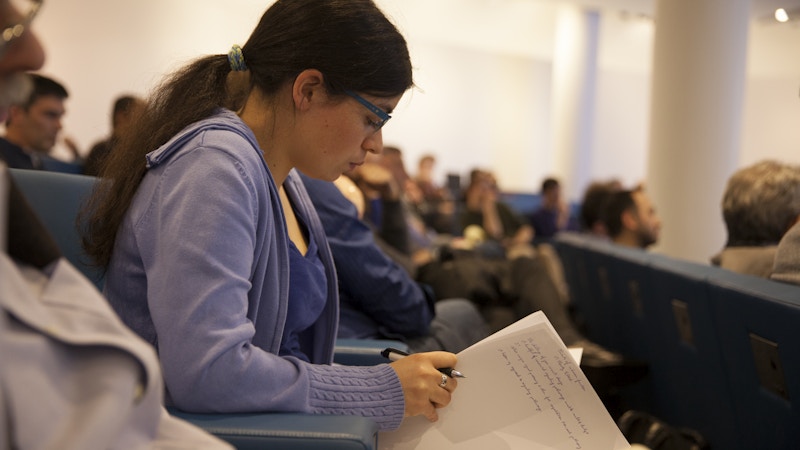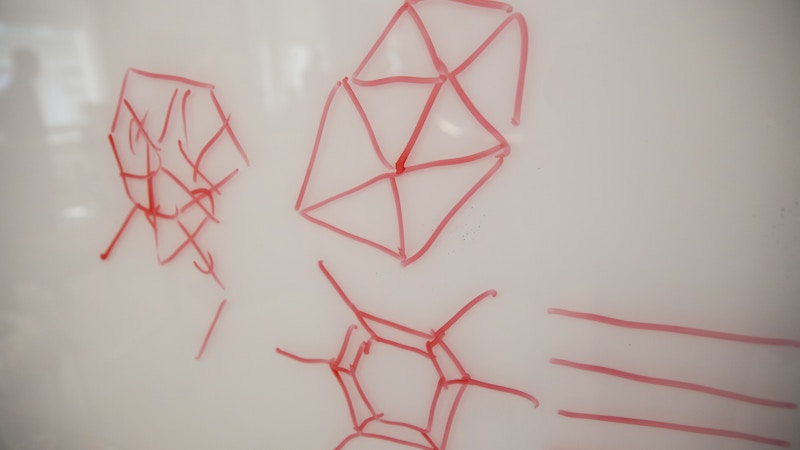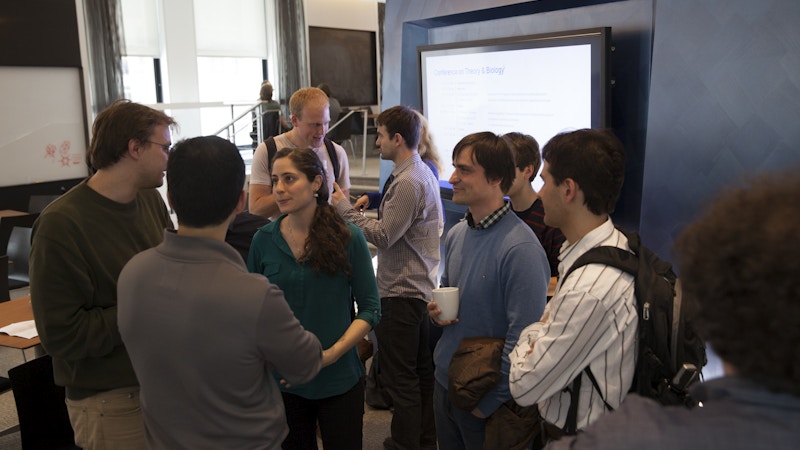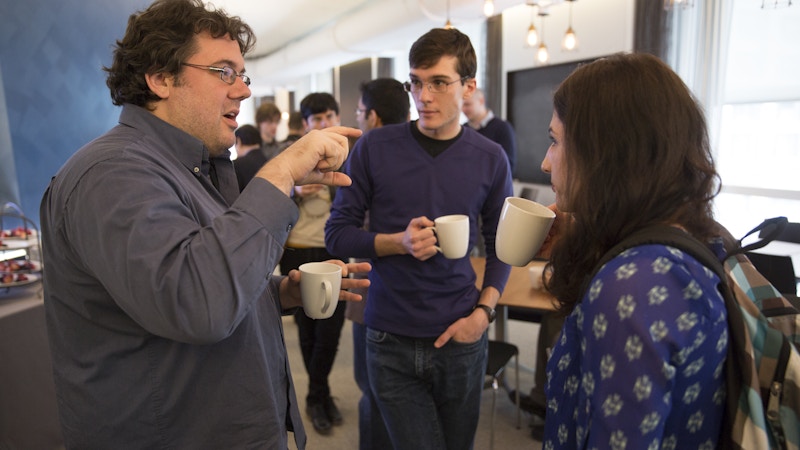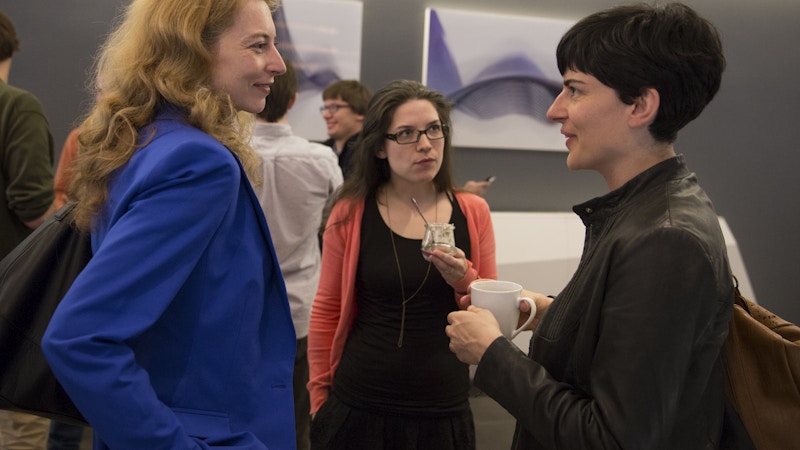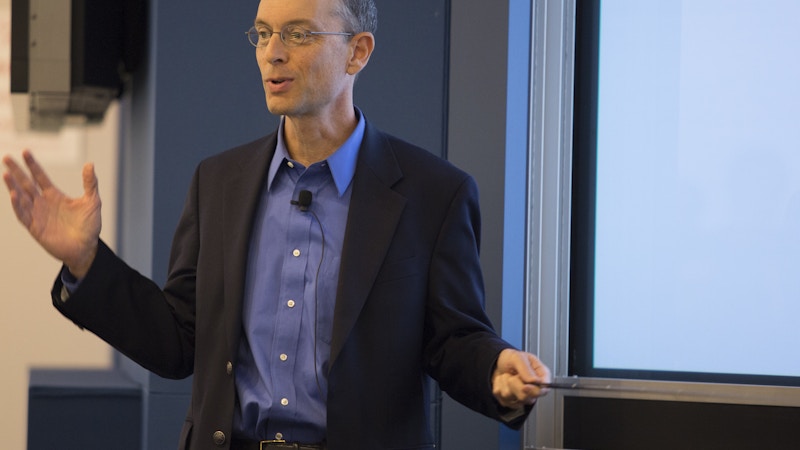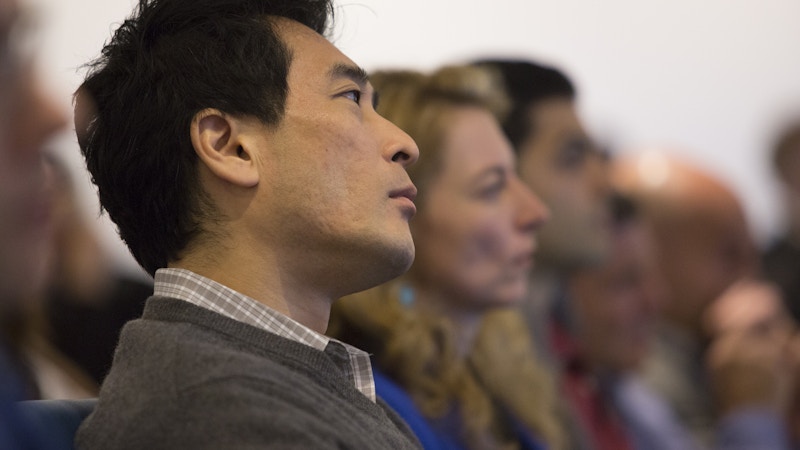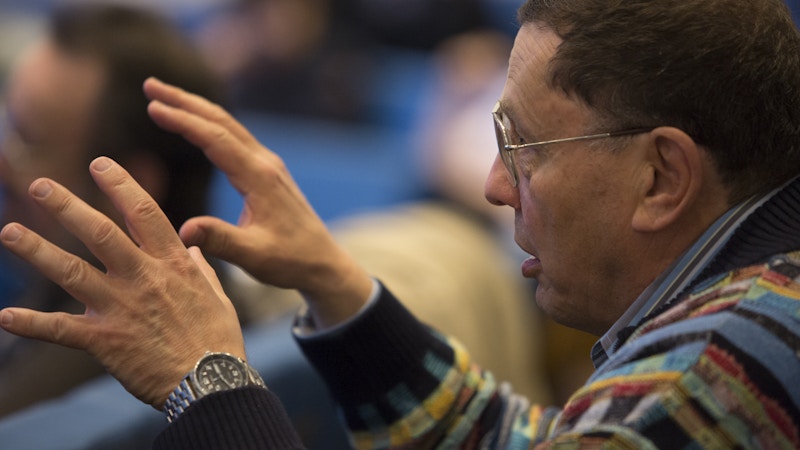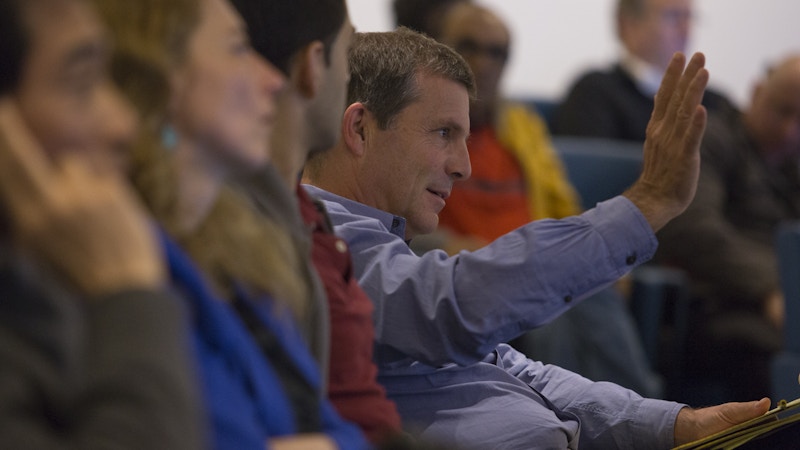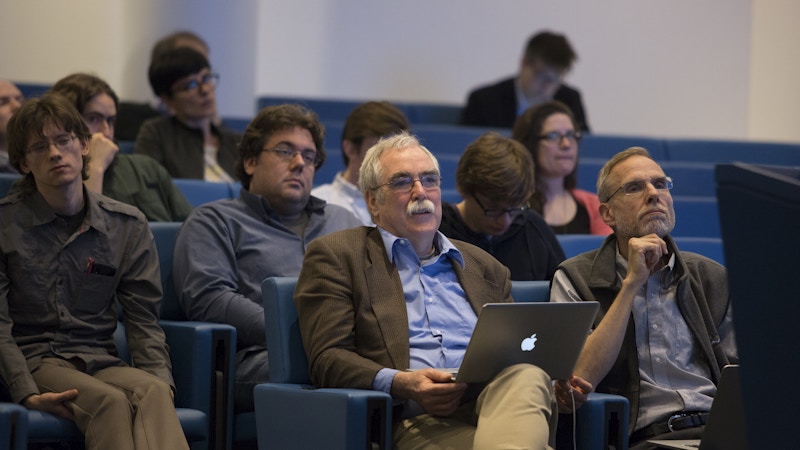Foundation Holds Conference on Theory and Biology
On April 11, the Simons Foundation hosted 132 scientists for a one-day conference on theory and biology. Organized under the aegis of the foundation’s Mathematical Modeling of Living Systems program (a joint initiative of the Mathematics and Physical Sciences and Life Sciences divisions), the conference featured two overview talks on the role of theory in the life sciences, as well as eight talks highlighting interactions between theory and experimentation. Topics ranged from the mechanics of cell-shape change during Drosophila embryonic development to ideas for understanding the representation of smells by networks of neurons in mammals.
The conference was organized to highlight the roles played by theoretical work in the life sciences, from the modeling of current experimental data to the formulation of concepts that help scientists organize results and plan new experiments. “We have the data now, and so the great curiosity in a group like this is if it’s possible to use the data in a way that brings the level of understanding higher than it was before,” says Eric Wieschaus, a professor of molecular biology at Princeton University.
The event brought together both theoretically and experimentally oriented scientists, providing them with an opportunity to share ideas and learn from one another. “There was a lot of time for informal interactions and conversations, and that’s important,” says Harmen Bussemaker, an associate professor of systems biology at Columbia University.
The Conference on Theory and Biology will be held annually at the Simons Foundation in New York City.
